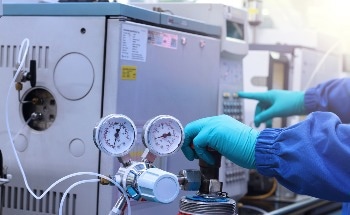
This is one of the essential pillars in a new study project at Aarhus University, which will note the growth of Denmark’s first reactor to generate hydrogen from biogas utilizing catalytic pyrolysis.
In the pyrolysis process, a high temperature is employed to divide the methane in natural gas, or in renewable biogas, into carbon and hydrogen.
The project has been financially supported by the Independent Research Fund Denmark.
What we need right now is not just zero carbon technologies. We also need carbon sequestering technologies with net negative carbon emissions. What we propose with this project is to adapt and optimize existing so-called turquoise hydrogen technology for biogas instead of natural gas.
Patrick Biller, Associate Professor and Project Head, Department of Biological and Chemical Engineering, Aarhus University
Biller added, “The result will be a genuine carbon-negative technology that is well-suited to Denmark's leading role as a biogas nation.”
Around 3% of global carbon emissions are obtained from the production of grey hydrogen, which has been produced from natural gas. The normal alternative to this is green hydrogen and by which water has been divided into oxygen and hydrogen via electrolysis.
But green hydrogen production is at best carbon-neutral if renewable electricity is employed, but never carbon-negative. It needs huge amounts of energy to divide the water and if renewable energy is not utilized, the production liberates CO2.
At present, 95% of global hydrogen production has been available from the Steam Methane Reforming (SMR) process where natural gas has been transformed into CO2 and hydrogen.
Turquoise hydrogen is highly being examined as an alternative; it also includes the production of hydrogen from natural gas. However, pyrolysis has been employed to transform carbon into a solid form. Usual turquoise hydrogen is carbon-neutral, as the carbon sources are natural gas and hence fossil resources. However, it is not liberated into the air.
Patrick Biller suggests designing and developing a technology that generates turquoise hydrogen produced from biogas.
Plants perform carbon capture every day through photosynthesis, and they actually do so quite well. Biogas originates from plant material that has absorbed CO2 from the atmosphere in this way.
Patrick Biller, Associate Professor and Project Head, Department of Biological and Chemical Engineering, Aarhus University
Biller continued, “This means that in biogas pyrolysis, carbon originally from the atmosphere is converted into solid form; a black powder that is pure carbon and can either be deposited or used in industry for other high-value products. This means there are no carbon emissions, but instead a net negative contribution to the atmosphere.”
With permission from Independent Research Fund Denmark, the research group currently aims to design and come up with a system that has the potential to regulate the process. It is not an easy task, although the goal is to adapt the present turquoise hydrogen technology.
There’s a big difference between natural gas and biogas, for example there are a lot of very different impurities in biogas to take into account. At the same time, methane pyrolysis requires high temperatures of around 1200 degrees Celsius.
Patrick Biller, Associate Professor and Project Head, Department of Biological and Chemical Engineering, Aarhus University
Biller added, “We want to avoid this, so we will try and find metallic catalysts that can significantly reduce the amount of energy required to initiate the reaction. We expect to be able to run the reaction at temperatures around 500—600 degrees.”
The finished system has been anticipated to be able to generate hydrogen with the help of around one-fifth of the energy utilized in green hydrogen production. Also, there is the benefit that this technique binds carbon that sources from the air. The system will be tested and made to run at Aarhus University’s research center in Foulum, AU Viborg.
Biller stated, “Denmark has a world-leading biogas sector. We’re doing great things within Power-2-X and hydrogen, and we have an energy system with large amounts of renewable energy. Turquoise hydrogen from biogas fits into this mix perfectly, and I can see great perspectives for Denmark in this area in the future.”